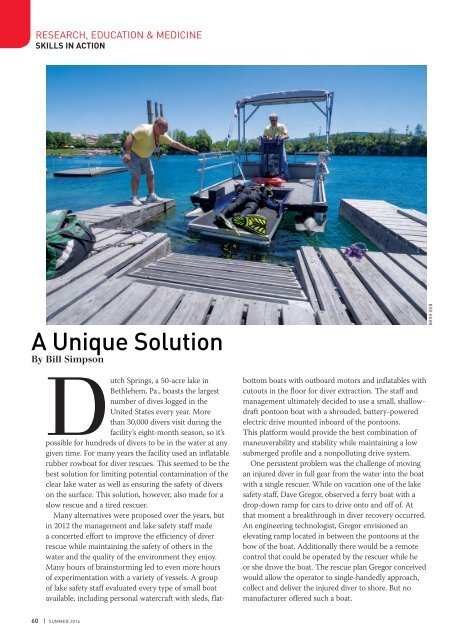AD 2016 Q3
Alert Diver is the dive industry’s leading publication. Featuring DAN’s core content of dive safety, research, education and medical information, each issue is a must-read reference, archived and shared by passionate scuba enthusiasts. In addition, Alert Diver showcases fascinating dive destinations and marine environmental topics through images from the world’s greatest underwater photographers and stories from the most experienced and eloquent dive journalists in the business.
Alert Diver is the dive industry’s leading publication. Featuring DAN’s core content of dive safety, research, education and medical information, each issue is a must-read reference, archived and shared by passionate scuba enthusiasts. In addition, Alert Diver showcases fascinating dive destinations and marine environmental topics through images from the world’s greatest underwater photographers and stories from the most experienced and eloquent dive journalists in the business.
Create successful ePaper yourself
Turn your PDF publications into a flip-book with our unique Google optimized e-Paper software.
RESEARCH, EDUCATION & MEDICINE<br />
SKILLS IN ACTION<br />
A Unique Solution<br />
By Bill Simpson<br />
Dutch Springs, a 50-acre lake in<br />
Bethlehem, Pa., boasts the largest<br />
number of dives logged in the<br />
United States every year. More<br />
than 30,000 divers visit during the<br />
facility’s eight-month season, so it’s<br />
possible for hundreds of divers to be in the water at any<br />
given time. For many years the facility used an inflatable<br />
rubber rowboat for diver rescues. This seemed to be the<br />
best solution for limiting potential contamination of the<br />
clear lake water as well as ensuring the safety of divers<br />
on the surface. This solution, however, also made for a<br />
slow rescue and a tired rescuer.<br />
Many alternatives were proposed over the years, but<br />
in 2012 the management and lake safety staff made<br />
a concerted effort to improve the efficiency of diver<br />
rescue while maintaining the safety of others in the<br />
water and the quality of the environment they enjoy.<br />
Many hours of brainstorming led to even more hours<br />
of experimentation with a variety of vessels. A group<br />
of lake safety staff evaluated every type of small boat<br />
available, including personal watercraft with sleds, flatbottom<br />
boats with outboard motors and inflatables with<br />
cutouts in the floor for diver extraction. The staff and<br />
management ultimately decided to use a small, shallowdraft<br />
pontoon boat with a shrouded, battery-powered<br />
electric drive mounted inboard of the pontoons.<br />
This platform would provide the best combination of<br />
maneuverability and stability while maintaining a low<br />
submerged profile and a nonpolluting drive system.<br />
One persistent problem was the challenge of moving<br />
an injured diver in full gear from the water into the boat<br />
with a single rescuer. While on vacation one of the lake<br />
safety staff, Dave Gregor, observed a ferry boat with a<br />
drop-down ramp for cars to drive onto and off of. At<br />
that moment a breakthrough in diver recovery occurred.<br />
An engineering technologist, Gregor envisioned an<br />
elevating ramp located in between the pontoons at the<br />
bow of the boat. Additionally there would be a remote<br />
control that could be operated by the rescuer while he<br />
or she drove the boat. The rescue plan Gregor conceived<br />
would allow the operator to single-handedly approach,<br />
collect and deliver the injured diver to shore. But no<br />
manufacturer offered such a boat.<br />
BOB HAHN<br />
60 | SUMMER <strong>2016</strong>









